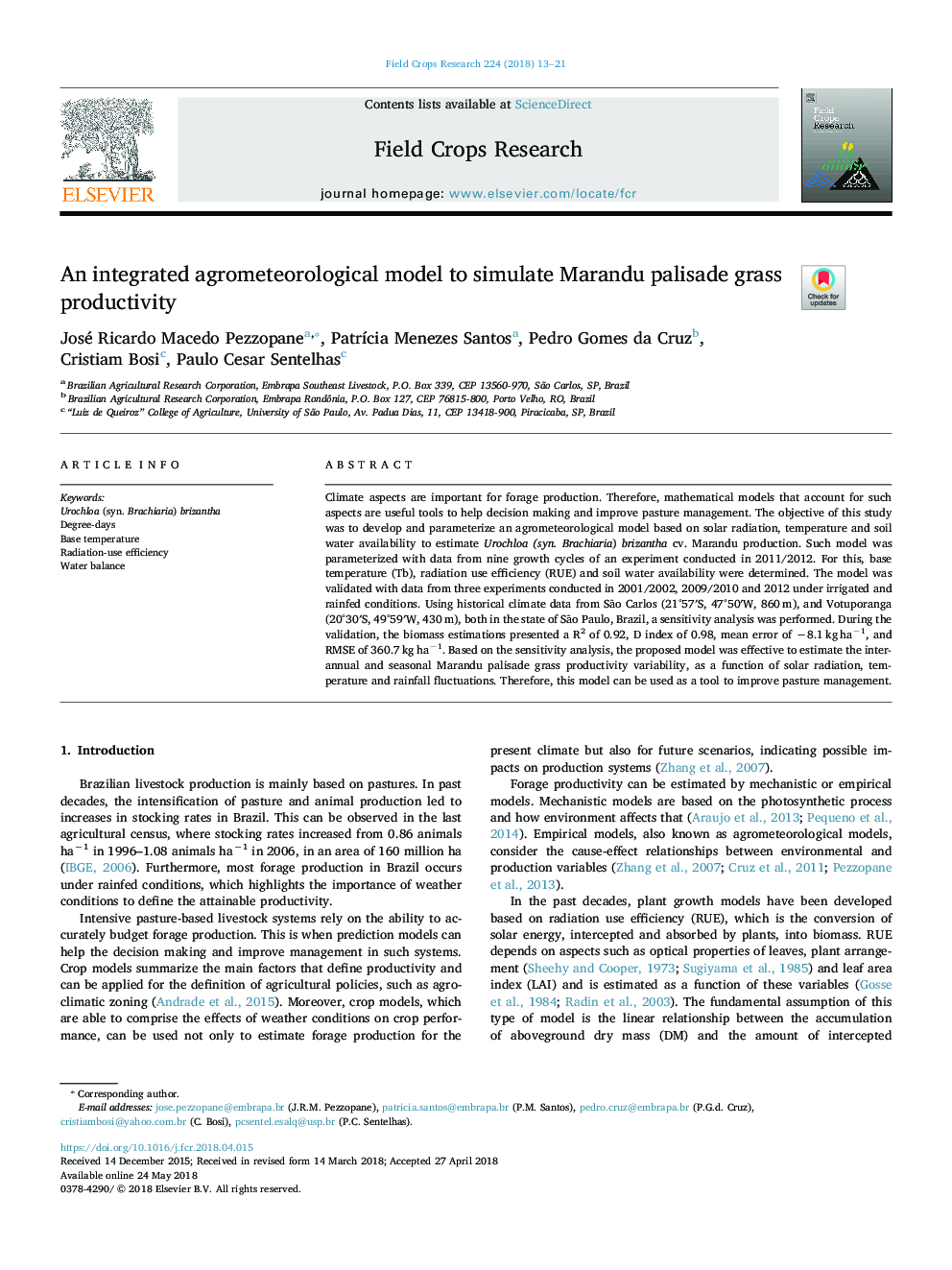| Article ID | Journal | Published Year | Pages | File Type |
|---|---|---|---|---|
| 8879108 | Field Crops Research | 2018 | 9 Pages |
Abstract
Climate aspects are important for forage production. Therefore, mathematical models that account for such aspects are useful tools to help decision making and improve pasture management. The objective of this study was to develop and parameterize an agrometeorological model based on solar radiation, temperature and soil water availability to estimate Urochloa (syn. Brachiaria) brizantha cv. Marandu production. Such model was parameterized with data from nine growth cycles of an experiment conducted in 2011/2012. For this, base temperature (Tb), radiation use efficiency (RUE) and soil water availability were determined. The model was validated with data from three experiments conducted in 2001/2002, 2009/2010 and 2012 under irrigated and rainfed conditions. Using historical climate data from São Carlos (21°57â²S, 47°50â²W, 860â¯m), and Votuporanga (20°30â²S, 49°59â²W, 430â¯m), both in the state of São Paulo, Brazil, a sensitivity analysis was performed. During the validation, the biomass estimations presented a R2 of 0.92, D index of 0.98, mean error of â8.1â¯kgâ¯haâ1, and RMSE of 360.7â¯kgâ¯haâ1. Based on the sensitivity analysis, the proposed model was effective to estimate the inter-annual and seasonal Marandu palisade grass productivity variability, as a function of solar radiation, temperature and rainfall fluctuations. Therefore, this model can be used as a tool to improve pasture management.
Related Topics
Life Sciences
Agricultural and Biological Sciences
Agronomy and Crop Science
Authors
José Ricardo Macedo Pezzopane, PatrÃcia Menezes Santos, Pedro Gomes da Cruz, Cristiam Bosi, Paulo Cesar Sentelhas,
